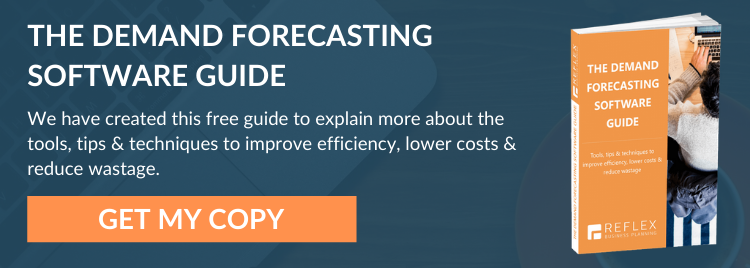Demand forecasting is an invaluable tool that can help businesses adjust their manufacturing operations for optimal production and cost control. There are several types of forecasting techniques, each with their pros and cons.
Today we’ll focus on two crucial types of demand forecasting: qualitative and quantitative forecasting, and we’ll discuss what you need to know to make the best choice.
1) Quantitative Forecasting
The quantitative forecasting method makes predictions about future demand based on the analysis of past historical data. Such data can expose seasonal patterns and changing trends that could potentially impact production and sales, and so it can help businesses make data-driven decisions.
Typical quantitative forecasting techniques include the analysis of sales data, web traffic, advertising expenditure and revenue, financial reports, or statistical modelling.
2) Qualitative Forecasting
Qualitative forecasting elaborates predictions about future demand based on the expert opinion of consultants, professionals or employees with ample experience in a given industry. Qualitative forecasting can be carried out by a panel of industry experts and may be complemented by market research.
Typical qualitative forecasting techniques include focus groups, consumer surveys and polls, and the Delphi Method, which questions a group of experts about their individual perceptions of future trends or events.
Practical Differences Between The Two Methods And How They Work Together
The main difference between quantitative and qualitative forecasting methods is that the former relies on objective numerical data, whereas the latter makes projections based on the subjective interpretation of one or more experts. In other words, quantitative forecasting involves number crunching, and qualitative forecasting involves making an educated guess.
This is not to say that one method is superior to the other in all instances, and in many cases both quantitative and qualitative forecasting methods are used side-by-side to produce a broader and more accurate picture of demand trends. Both methods have their pros and cons and both can produce excellent results if used in the right settings or applications. For example, numerical data tends to be seen as more robust and categorical than opinions or estimates, so quantitative forecasting could have more acceptance among stakeholders or board executives.
On the other hand, quantitative methods lack the nuance and insight that a seasoned professional can bring to forecasting. Numerical methods are rather rigid and may not suit the exploration of possibilities, and they can’t be used when estimating demand for a new product, since there’s no historical data to analyse. At the risk of oversimplifying both methods, quantitative forecasting gathers and consolidates real-world data, while qualitative forecasting analyses and interprets this data.
In some cases, the combination of both methods is the most sensible approach to demand forecasting. For example, you could look at historical sales data and targeted population reports to gain insight into how demand for a product has changed over time. Once a trend emerges or you form a hypothesis, you could use qualitative methods like interviews or consumer focus groups to deepen your understanding and make decisions.
Improve Demand Forecasting Accuracy With Specialised Software
Forecasting software can enable a flexible and accurate approach to your demand forecasting strategy. Software solutions like Reflex Planning incorporate a range of advanced quantitative and qualitative forecasting capabilities that can be tailored to suit specific needs and situations.
With demand forecasting software, manufacturers can effortlessly switch between qualitative and quantitative methods to make data-driven decisions that reflect real demand and contribute to business growth. Get in touch today to arrange a free product demo.

